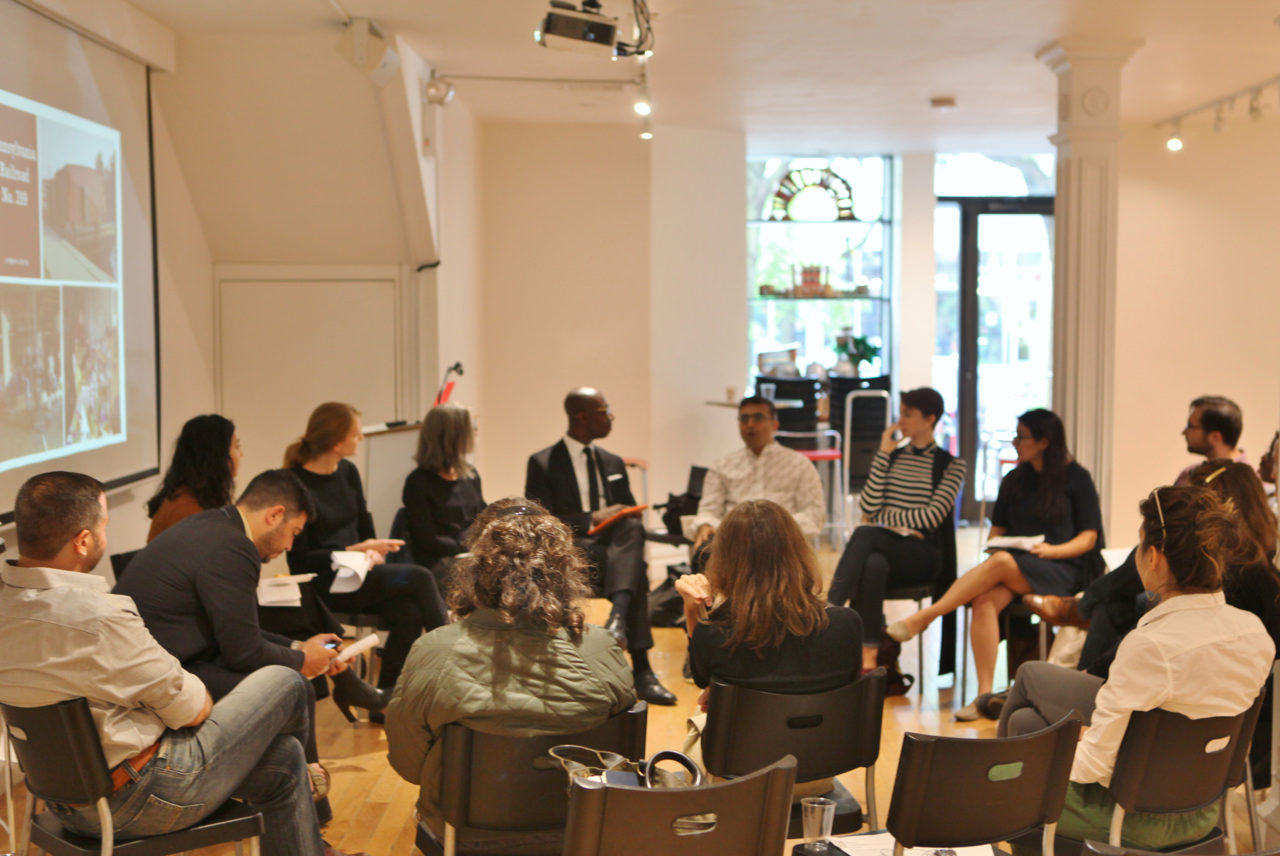by: Michaela Metcalfe and Michael Caton
On 09.29.17, the fourth development session of the AIANY Civic Leadership Program (CLP), titled “The Activist, the Architect, the Artist: Case Studies in Civic Engagement,” brought together six practitioners from various professions – architecture, art, landscape architecture, law, and urban design – to explore different forms of civic engagement in communities both large and small.
Defined as individual and/or collective actions that critically address issues of public concern, civic engagement is essential to the mindful transformation of shared spaces within our built environment. Civic engagement lies at the heart of an inclusive, democratic development process, and is poised to augment traditional, top-down design processes through meaningful conversation, collaboration, and collective visioning.
The session endeavored to gather and learn from individuals who are cultivating civically-minded processes infused with, and reliant on, creating and maintaining community partnerships. From organizing local, grassroots community organizations to initiating collaboration with local government, the six invited panelists challenge the status quo and lead an undercurrent of civic action that is influencing the transformation of design processes and the resultant public space.
The first part of the session included case study presentations by an architect, a landscape architect/urban designer, and an architect/urban designer who are action oriented, facilitators of engagement with passionate commitment to inclusive design processes that allow communities to explore the potential of shared space. Amanda Schachter of SLO Architecture took us on a journey to the Bronx to show us how underutilized infrastructure is being activated by collaborative design explorations with community partners. Runit Chhaya of Grain Collective showed us the value of collaborating with community partners in the design process through various forms of engagement and shared guiding principles vital to facilitating outreach. Finally, Lee Altman of SCAPE discussed how the Hudson Valley Initiative at GSAPP is contributing to the long-term health and viability of the region through new paradigms of research, practice and pedagogy that rely on community partnerships.
After the case study presentations, the panelists gathered with participants to examine how the power of shared decision-making impacts and strengthens design processes, how activating community resources can foster inclusive design-thinking, and how empowering residents and citizens with a sense of agency can positively transform civic space. Each panelist demonstrated a spirit of activism to earnestly addressing issues of public concern. Their individual commitment to collaborative processes that root design decisions and resulting artifacts in the fertile seedbed of community stakeholder knowledge enables an architecture uniquely equipped to serve its community.








